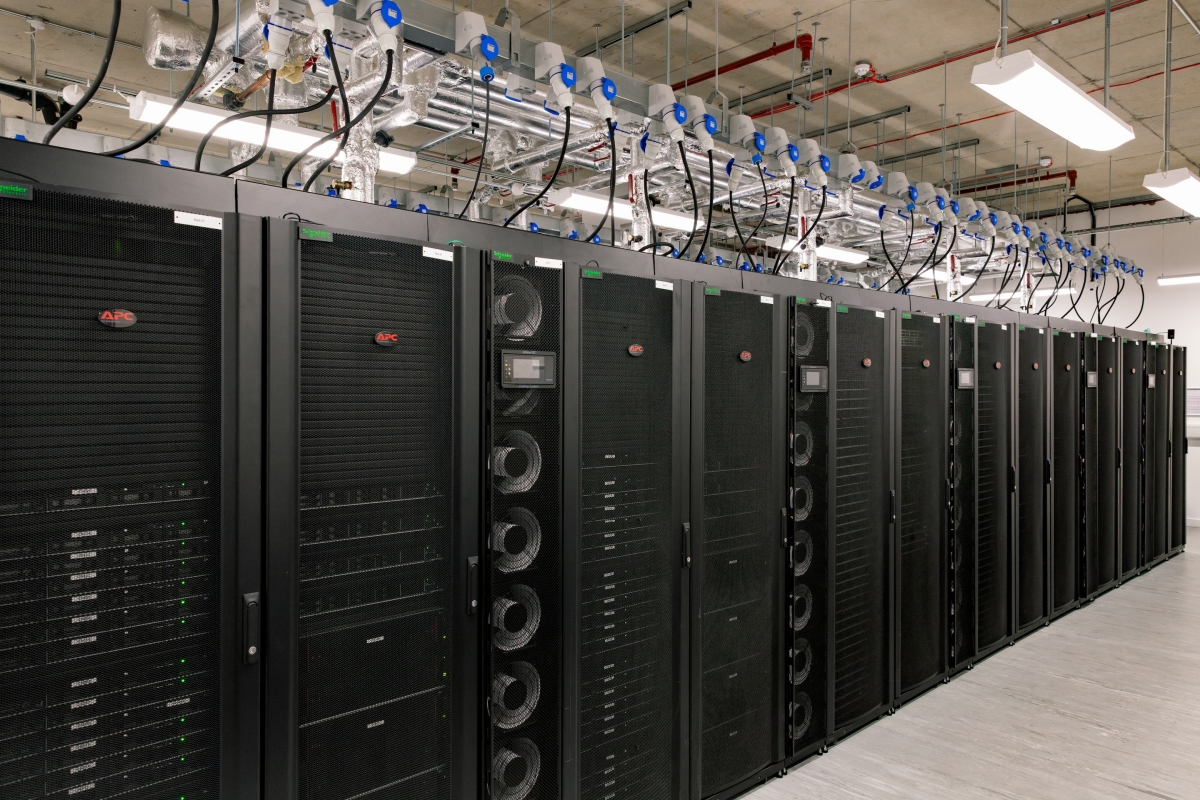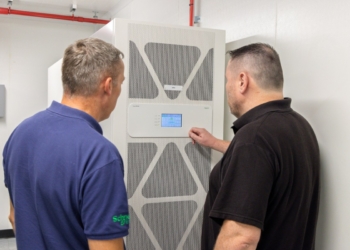Data centre district heating project delivered at QMUL
Author: Joe Peck

Schneider Electric, a player in energy management and automation, and its EcoXpert Partner, Advanced Power Technology (APT), have delivered a data centre modernisation project at the Queen Mary University of London (QMUL).
Together, the companies have created a platform for heat recovery at the University’s data centre, enabling waste heat from the facility to be connected to a campus-wide district heating network, providing heating and hot water for the buildings and student accommodation nearby.
The project both reduces the campus’ scope one CO2 emissions – in line with Queen Mary’s sustainability goals – and has also allowed it to reduce the costs of its energy bills. Furthermore, the new energy-efficient data centre has provided the university with increased resiliency and processing power for its on-premises, large-scale research and intensive computing applications, helping it to provision for future expansion.
Queen Mary University of London is ranked 94th in the world in the 2025-26 edition of the US News and World Report Best Global Universities rankings, and today has over 32,000 students from more than 170 nationalities and 5,700 staff – with nine Nobel Prize winners among its former staff and students.
It says it is committed to conducting “world-leading research” and adheres to the principles of sustainable development across all areas of its operational and academic activities. Its vision is to create and oversee the evolution of a large-scale distributed computing infrastructure needed to maintain the UK’s position as a world leader in particle physics.
As such, the university is a participant in the Grid for Particle Physics (GridPP) project, a collaborative effort among particle physicists, computer scientists, and engineers to analyse data generated by high-energy physics experiments, such as those conducted at the world-famous Large Hadron Collider (LHC) at CERN in Switzerland.
The size, scale, and importance of this work means that the university must operate and maintain a highly-efficient, on-premises data centre – ensuring it meets the technical requirements of existing and future research developments, especially those requiring High Throughput Computing (HTC) applications.
Prior to the modernisation project, Queen Mary’s data centre was experiencing reliability, scalability, and availability issues which required manual, on-site interventions to fix. It was also becoming outdated and its operations were, at times, impacted due to a build-up of heat in its server racks from its inefficient cooling systems.
Future research computing may also have been hindered due to the data centre’s hosting limitations. The refresh was, therefore, vital to improve and stabilise day-to-day operations. In addition, its proximity to the campus’ district heating network presented an opportunity for a new solution be designed and implemented to bring the data centre in line with the university’s sustainability goals.
Schneider Electric’s data centre, power, and cooling solutions were already installed across Queen Mary’s estate, so when it came to the plans to upgrade its operations, the university directly sought help from Schneider Electric’s partner ecosystem.
Schneider Electric’s long-standing EcoXpert Partners, Advanced Power Technology (APT), an independent supplier of critical power and cooling systems, was selected to help Queen Mary meet its modernisation and sustainability goals.
Key to the strategy was the integration of components including Schneider Electric’s EcoStruxure Row Data Centre system. It also incorporated APC NetShelter Racks, APC NetBotz environmental monitoring equipment, InRow cooling, and EcoStruxure Data Centre Expert software.
The new configuration provided by APT, according to Schneider Electric, delivered a more energy-efficient cooling solution and enabled the heat recovery to support the university’s sustainability strategy – allowing Queen Mary to transfer waste heat and reuse it directly for heating and hot water across various buildings, including student accommodation, via a district heating system.
Professor Jonathan Hays, Queen Mary University of London, comments, “The support we’ve had from APT and Schneider Electric has been unparalleled. Both companies came together to help us develop an exciting and innovative project which would enable us to provision for the future. The biggest impact is that we were able to deliver on what we promised while improving our sustainability. The new data centre is more reliable and efficient than ever and, through the heat recovery, we have significantly reduced our spending on heating and hot water while gaining enhanced reputational benefits from taking a lead on sustainability within our data centre operations.”
“The project at Queen Mary demonstrates how digital infrastructure can be a catalyst for net zero, allowing today’s organisations to benefit from the power of advanced computing,” adds Mark Yeeles, Vice President, Secure Power division, Schneider Electric UK & Ireland. “By combining innovative engineering with sustainable data centre solutions, the university has developed an enhanced infrastructure platform that will meet its research computing requirements while supporting its sustainability strategy.”
“Schneider Electric’s EcoStruxure Data Centre solutions were essential to help Queen Mary bring together its power, cooling, racks, and management systems, and support the deployment of its high-density IT equipment needed for its research,” claims John Andrew, Technical Sales Manager, APT. “This approach also created a platform to support its sustainability objectives via heat reuse, while enabling the University to act proactively and preventatively to intercept and remediate potential future issues.”
For more from Schneider Electric, click here.








